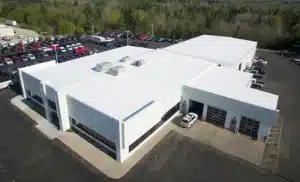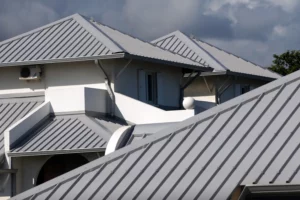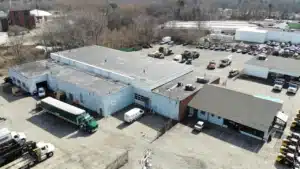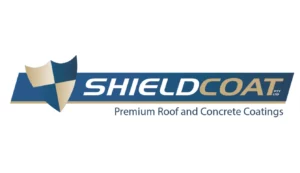Assessing the Condition of Your Damaged Roof: Repair or Replace?
Introduction
When it comes to your home, the roof is one of the most crucial components. It protects you and your family from the elements, provides insulation, and enhances the overall aesthetics of your property. However, over time, roofs can get damaged due to various factors such as age, severe weather conditions, or lack of maintenance. When confronted with roof damage, homeowners often face a common dilemma: should they repair the damaged areas or replace the entire roof? In this blog post, we will guide you through the process of assessing the condition of your damaged roof, helping you make an informed decision.
Understanding Roof Damage
Before deciding whether to repair or replace your damaged roof, it’s essential to understand the types of damages roofs can undergo. One of the most common causes of roof damage is hail. Hailstorms can leave behind visible signs of damage, such as dents, cracks, or missing shingles. This type of damage may not be immediately apparent and could lead to more significant problems if left unaddressed. Other forms of roof damage include leaks, mold growth, sagging areas, and worn-out shingles. Identifying the specific issues affecting your roof will determine the best course of action.
Inspecting Your Damaged Roof
To assess the condition of your damaged roof, start by conducting a thorough inspection. Begin from the ground and slowly work your way up, checking for any signs of obvious damage. Look for missing or damaged shingles, cracked flashing, or loose gutters. If you feel comfortable doing so, climb onto the roof and carefully examine the surface. Pay attention to any soft spots, discoloration, or signs of water damage. Use binoculars if necessary to inspect hard-to-reach areas. While examining the roof, keep an eye out for any debris or organic growth, as these can indicate underlying issues.
Calling in the Professionals
While a visual inspection can give you a general idea of your roof’s condition, it is crucial to consult with professional roof contractors to get an accurate assessment. Hire a reputable contractor, such as Patriot Flat Roof Contractors, who specialize in residential roofs. They have the expertise and tools to identify hidden damages and provide you with an objective evaluation. Schedule an inspection and have the contractor thoroughly examine your roof. They will be able to pinpoint the extent of the damage and recommend the most suitable course of action.
Repairing Your Damaged Roof
If the damages to your roof are minor and localized, repair may be a viable option. Common repairs include replacing missing or damaged shingles, fixing cracked flashing, or sealing leaks. Repairing smaller areas of damage can extend the lifespan of your roof and prevent further deterioration. It is essential to address roof repairs promptly to avoid more expensive and extensive issues down the line. Consult with your roofing contractor to determine the specific repairs needed and ensure that the work is performed by professionals to guarantee long-lasting results.
Replacing Your Damaged Roof
In some cases, the extent of the damage may be beyond repair, or the roof might already be nearing the end of its lifespan. If your roof is experiencing widespread damage, severe leaks, or if it is aging, replacing the entire roof may be the best option. While it may seem like a significant investment, a new roof offers long-term benefits, including improved safety, enhanced energy efficiency, and increased property value. Work with a professional roofing contractor to choose the right materials and design that best suit your needs and budget.
Factors to Consider
When deciding between repairing or replacing your damaged roof, consider the following factors:
1. Extent of damage: Assess the severity and extent of the damage to determine if repairs can effectively address the issues or if a replacement is necessary.
2. Age of the roof: If your roof is nearing the end of its lifespan or already exhibiting signs of wear and tear, a replacement may be a more cost-effective long-term solution.
3. Budget: Consider your financial capabilities and evaluate if the cost of repairs outweighs the benefits of a new roof.
4. Energy efficiency: Upgrading to modern roofing materials can improve energy efficiency, reducing energy bills in the long run.
5. Property value: A new roof can enhance the curb appeal and market value of your home, making it an attractive option if you plan to sell in the future.
6. Insurance coverage: Consult your insurance provider to understand the coverage for roof repairs or replacements due to damage caused by hail or other factors.
Conclusion
In conclusion, when faced with a damaged roof, it is essential to assess the extent of the damage and consult with professional roof contractors. They can provide an accurate evaluation and help you decide whether to repair or replace your roof. Keep in mind factors such as the extent of damage, age of the roof, budget, energy efficiency, property value, and insurance coverage when making your decision. Remember that addressing roof damage promptly is crucial to prevent further deterioration and ensure the safety and longevity of your home.






